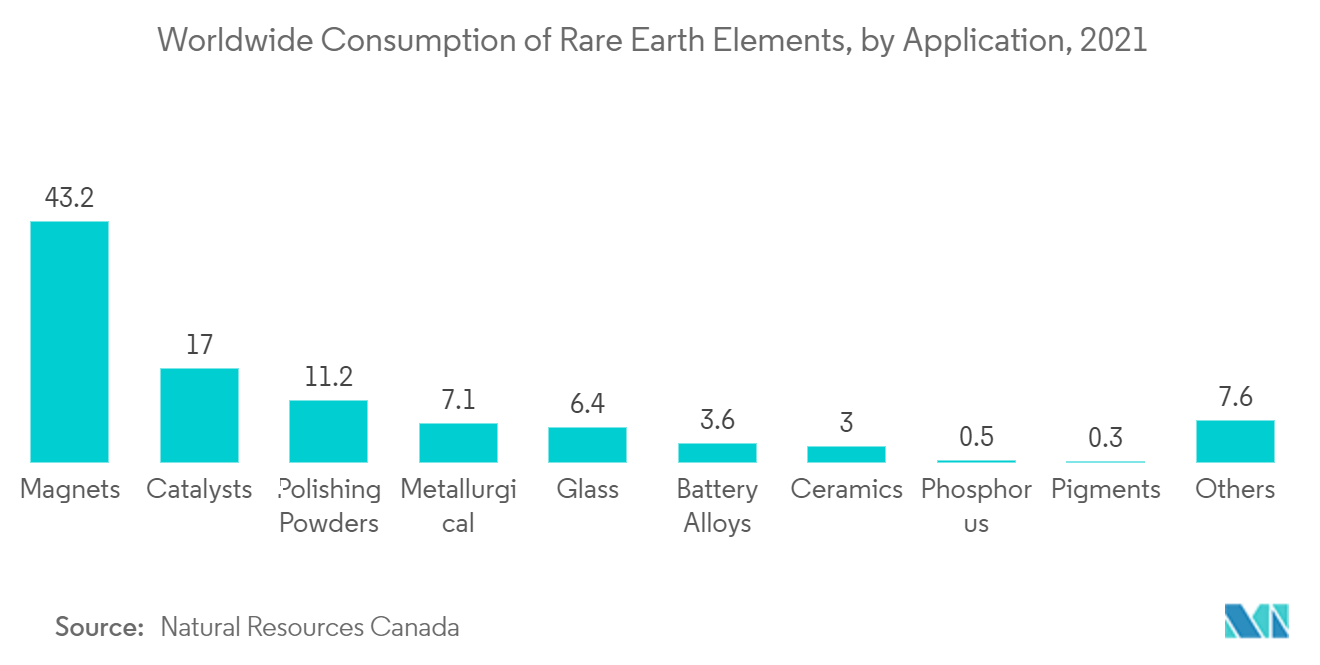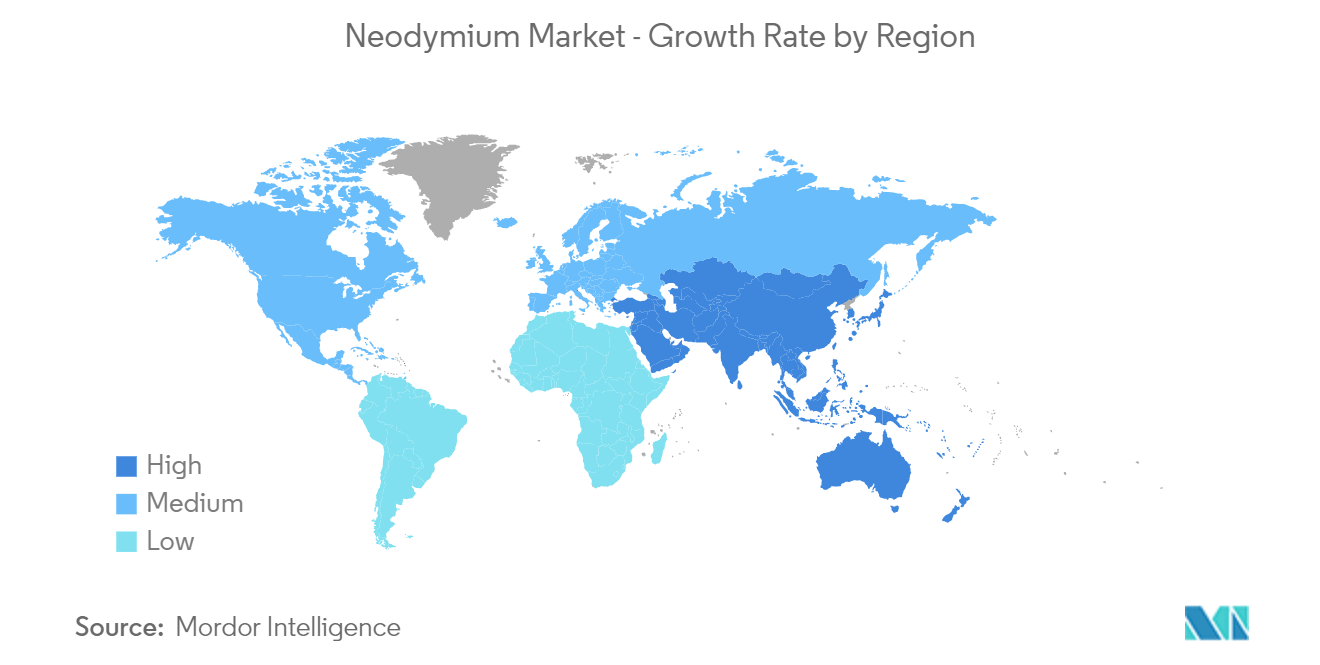Market Trends of Neodymium Industry
Automotive Segment to Dominate the Market
- The automotive industry is the major end-user segment for the market owing to the extensive usage of NdFeB magnets in automobiles. They are used as the static part of electric motors, which are in high demand owing to technological advancements.
- Due to its strong magnetic properties, neodymium is one of the rare earth elements that electronic automobile manufacturers use in magnetic motors. The demand for neodymium is expected to increase over the forecast period since it is stronger, lighter, and more effective as compared to copper coils.
- The global demand for rare earth elements for permanent magnets to be used in industrial applications is projected to increase to 7,000 metric tons in 2025. By 2035, the production of rare earths is expected to more than double and add about 300,000 metric tons, as compared to the volume produced in 2021.
- The alloy of neodymium, iron, and boron is used to make the permanent magnet known as NdFeB. In 2022, the global demand for neodymium-iron-boron (NdfeB) permanent magnets reached 16,100 tons.
- Neodymium is also used in tire manufacturing as neodymium-based performance butadiene rubber. According to Top Tire Review, in 2021, the tire industry was valued at USD 130.54 billion. The top three companies, Michelin, Bridgestone, and Goodyear, accounted for approximately 50% of the overall tire industry revenue.
- Further, growth in the tire market amidst rising demand from both OEMs and automotive aftermarkets is anticipated to increase neodymium catalyst demand in the tire industry. For instance, in June 2022, Bridgestone Americas opened a new Advanced Tire Production Center in Akron, Ohio, U.S. The company invested a sum of USD 21 million in this new production center, which will produce Firestone Firehawk race tires for the NTT INDYCAR SERIES.
- Industries such as automotive, electronics, and healthcare have witnessed innovation and development, driving the demand for neodymium magnets. In 2021, approximately 85% of automakers used neodymium-incorporated permanent magnet motors, and the automotive demand for rare earths rose by 25% in 2022.
- All the factors, in turn, are projected to have a significant impact on market growth during the forecast period.

Asia-Pacific Region to Dominate the Market
The Asia-Pacific region holds the largest share of the market due to China and Japan being the two significant markets in the region, with both countries being among the largest producers of permanent magnets in the world.
Neodymium is the strongest rare earth metal, and so it is the most widely used in permanent magnets. Neodymium-iron-boron magnets are preferred for most applications because of their superior performance in the smallest volume.
In 2021, China had the biggest mine production of rare earths in the Asia-Pacific region. The country produced an estimated 168 thousand metric tons of rare-earth oxide (REO) that year.
Rare earth elements contribute a total value of nearly USD 200 billion to the Indian economy. India has the world's fifth-largest reserves of rare earth elements, roughly twice as much as Australia.
Neodymium is used in wind turbines for the production of wind energy. The Asia-Pacific region holds the largest number of wind energy construction projects that were initiated in 2022. For instance, the Pinnapuram Integrated Renewable Energy Project, started in Andhra Pradesh, involves the construction of a 5,230 MW integrated hybrid renewable energy project.
In 2022, MacIntyre Wind Farm, a 1,026 MW wind farm, was to be constructed in Queensland, Australia, with an investment of USD 1,414 million.
India holds the fourth-largest wind power installed capacity globally. These projects are mostly spread in the northern, southern, and western parts of the country. The government achieved the target of 60 GW of onshore wind and 5 GW of offshore wind in 2022.
In February 2021, South Korea announced an investment of USD 43.2 billion for the construction of offshore wind farms by 2030. This initiative would help the country become carbon-neutral by 2050.
All the aforementioned factors are expected to significantly impact the demand for the market studied in the region during the forecast period.


